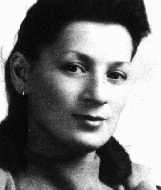You searched for: %E7%9C%9F%E4%BA%BA%E7%99%BE%E5%AE%B6%E4%B9%90%E6%B8%B8%E6%88%8F,%E6%BE%B3%E9%97%A8%E7%99%BE%E5%AE%B6%E4%B9%90%E7%BD%91%E5%9D%80,%E3%80%90www.2234yule.com,%E5%A4%8D%E5%88%B6%E6%89%93%E5%BC%80%E7%BD%91%E5%9D%80%E3%80%91,ag%E7%99%BE%E5%AE%B6%E4%B9%90%E5%B9%B3%E5%8F%B0,%E7%BD%91%E4%B8%8A%E7%99%BE%E5%AE%B6%E4%B9%90%E7%BD%91%E7%AB%99,%E6%BE%B3%E9%97%A8%E7%99%BE%E5%AE%B6%E4%B9%90%E7%BD%91%E5%9D%80,%E7%99%BE%E5%AE%B6%E4%B9%90%E5%9C%A8%E7%BA%BF,%E7%99%BE%E5%AE%B6%E4%B9%90%E5%B9%B3%E5%8F%B0,%E7%99%BE%E5%AE%B6%E4%B9%90%E6%B8%B8%E6%88%8F,%E7%99%BE%E5%AE%B6%E4%B9%90%E8%AE%BA%E5%9D%9B,%E7%99%BE%E5%AE%B6%E4%B9%90%E6%8A%80%E5%B7%A7,%E7%99%BE%E5%AE%B6%E4%B9%90%E6%8A%95%E6%B3%A8%E5%9C%B0%E5%9D%80,%E7%99%BE%E5%AE%B6%E4%B9%90%E7%AD%96%E7%95%A5,,2234yule.com%E7%BD%91%E5%9D%80KABBdBdfdhffBfdff
<< Previous | Displaying results 351-400 of 540 for "%E7%9C%9F%E4%BA%BA%E7%99%BE%E5%AE%B6%E4%B9%90%E6%B8%B8%E6%88%8F,%E6%BE%B3%E9%97%A8%E7%99%BE%E5%AE%B6%E4%B9%90%E7%BD%91%E5%9D%80,%E3%80%90www.2234yule.com,%E5%A4%8D%E5%88%B6%E6%89%93%E5%BC%80%E7%BD%91%E5%9D%80%E3%80%91,ag%E7%99%BE%E5%AE%B6%E4%B9%90%E5%B9%B3%E5%8F%B0,%E7%BD%91%E4%B8%8A%E7%99%BE%E5%AE%B6%E4%B9%90%E7%BD%91%E7%AB%99,%E6%BE%B3%E9%97%A8%E7%99%BE%E5%AE%B6%E4%B9%90%E7%BD%91%E5%9D%80,%E7%99%BE%E5%AE%B6%E4%B9%90%E5%9C%A8%E7%BA%BF,%E7%99%BE%E5%AE%B6%E4%B9%90%E5%B9%B3%E5%8F%B0,%E7%99%BE%E5%AE%B6%E4%B9%90%E6%B8%B8%E6%88%8F,%E7%99%BE%E5%AE%B6%E4%B9%90%E8%AE%BA%E5%9D%9B,%E7%99%BE%E5%AE%B6%E4%B9%90%E6%8A%80%E5%B7%A7,%E7%99%BE%E5%AE%B6%E4%B9%90%E6%8A%95%E6%B3%A8%E5%9C%B0%E5%9D%80,%E7%99%BE%E5%AE%B6%E4%B9%90%E7%AD%96%E7%95%A5,,2234yule.com%E7%BD%91%E5%9D%80KABBdBdfdhffBfdff" | Next >>
-
Kindertransport, 1938–40
ArticleKindertransport refers to a series of rescue efforts between 1938 and 1940 that brought thousands of refugee children to Great Britain from Nazi Germany.
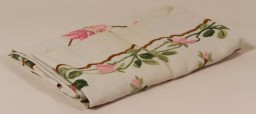
-
Hermann Ludwig Maas
ArticleHermann Ludwig Maas, a Protestant pastor in Heidelberg, Germany, was a rescuer and clergyman who stood in solidarity with the Jewish community.
-
Berlin
ArticleBerlin was home to Germany’s largest Jewish community. It was also the capital of the Third Reich and the center for the planning of the "Final Solution."

-
Hungary before the German Occupation
ArticleTowards the end of 1940, Hungary joined the Axis powers and invaded Yugoslavia and the Soviet Union. Learn more about Hungary before the German occupation.
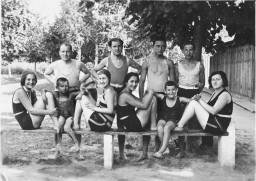
-
Polish Jewish Refugees in Lithuania, 1939–40
ArticleLearn more about Polish Jewish refugees that relocated to Lithuania between 1939-1940.
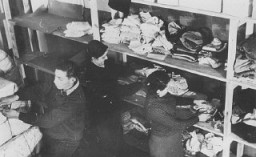
-
Nazi Terror Begins
ArticleAfter rising to power in January 1933, the Nazis began the process of moving Germany from a democracy to a dictatorship. Learn more.

-
Gardelegen
ArticleIn April 1945, US troops encountered a barn on the outskirts of Gardelegen where the SS and its accomplices had massacred over 1,000 concentration camp prisoners.

-
Tower of Sephardic faces: The Jewish community of Monastir, Macedonia
ArticleOn March 11, 1943, over 3,000 of Monastir’s Jews were deported to Treblinka. Learn more about the history of the community and postwar memorialization.

-
The Evian Conference
ArticleAt the July 1938 Evian Conference, delegates from nations and organizations discussed the issue of Jewish refugees fleeing persecution in Nazi Germany. Learn more
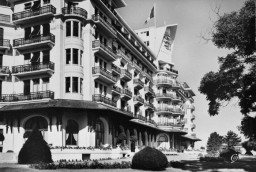
-
Locating the Victims
ArticleThe Germans and their collaborators used paper records and local knowledge to identify Jews to be rounded up or killed during the Holocaust.

-
Mobile Killing Squads
ArticleLearn more about Nazi mobile killing squads (Einsatzgruppen) killing activities in the Soviet Union during World War II.

-
Rescue and Resistance
ArticleWhile some European Jews survived the Holocaust by hiding or escaping, others were rescued by non-Jews. Learn more about these acts of resistance.

-
Jews in Prewar Germany
ArticleJewish people have lived in Germany since the Middle Ages. Learn more about Jewish life, identity, and culture in Germany before the Nazis came to power.
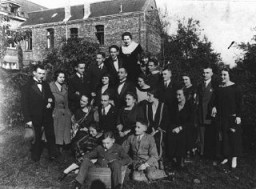
-
Emanuel Ringelblum and the Creation of the Oneg Shabbat Archive
ArticleEmanuel Ringelblum was a Warsaw-based historian and social welfare worker before WWII. Learn about the secret archive he would establish in the Warsaw ghetto.

-
Mohamed Helmy
ArticleDr. Mohamed Helmy and Frieda Szturmann helped save a Jewish family in the heart of Nazi Germany. Helmy was the first Arab recognized as Righteous Among the Nations.

-
Lebensraum
ArticleThe concept of Lebensraum, “living space,” was as a critical component in the Nazi worldview that drove both its military conquests and racial policy.
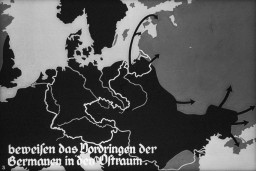
-
Helena Husserlova with her daughter, Zdenka
PhotoIn this portrait, Helena Husserlova, wearing a Jewish badge, poses with her daughter Zdenka who is holding a teddy bear. The photograph was taken shortly before they were deported to Theresienstadt. Zdenka was born in Prague on February 6, 1939. On October 10, 1941, when Zdenka was just two and a half years old, her father was deported to the Lodz ghetto. He died there almost a year later, on September 23, 1942. Following his deportation, Helena and Zdenka returned to Helena's hometown to live with…
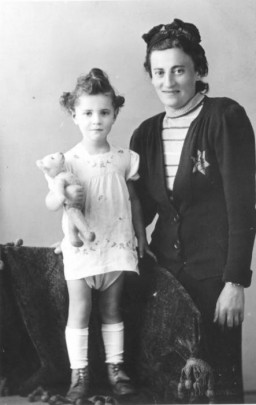
-
German Troops Occupy Hungary
Timeline EventMarch 19, 1944. On this date, Germany occupied Hungary and installed General Dome Sztojay as prime minister.
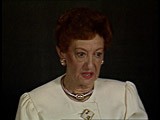
-
Stahlecker Report
Timeline EventOctober 15, 1941. On this date, Walter Stahlecker submitted a report on the killing of Jewish civilians in the northwestern Soviet Union.

-
The Nazi Rise to Power
ArticleThe Nazi Party was one of a number of right-wing extremist political groups that emerged in Germany following World War I. Learn about the Nazi rise to power.
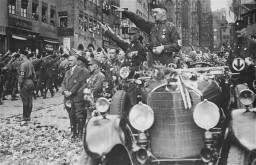
-
The United States and the Refugee Crisis, 1938–41
ArticleNazi Germany’s territorial expansion and the radicalization of Nazi anti-Jewish policies triggered a mass exodus. Learn about the US and the refugee crisis of 1938–41.
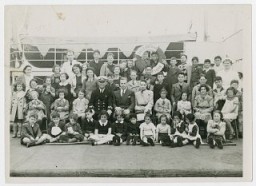
-
Background: Jurists' Trial Verdict
ArticleThe Justice Case, or Jurists’ Trial, of the Subsequent Nuremberg Proceedings tried members of the German justice administration. Browse excerpts from the verdict.
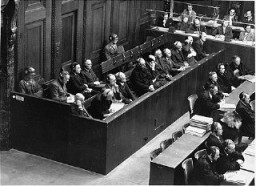
-
How did postwar trials shape approaches to international justice?
Discussion QuestionThe aftermath of the Holocaust raised questions about the search for justice in the wake of mass atrocity and genocide. The World War II Allied powers provided a major, highly public model for establishing internati...

-
Paul Eggert, Helga Gross, and Dorothea Buck describe forced sterilization
Oral HistoryPaul Eggert was categorized as "feeble-minded." At age 11, he was institutionalized and sterilized without his knowledge. Helga Gross attended a school for the deaf in Hamburg, Germany. She was sterilized in 1939, aged 16. At age 19, Dorothea Buck was diagnosed as schizophrenic and sterilized without her knowledge. [Photo credits: Getty Images, New York City; Yad Vashem, Jerusalem; Max-Planck-Institut für Psychiatrie (Deutsche Forschungsanstalt für Psychiatrie), Historisches Archiv, Bildersammlung GDA,…
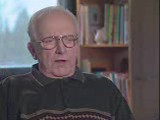
-
Deportations to Killing Centers
ArticleWith help from allies and collaborators, German authorities deported Jews from across Europe to killing centers. The vast majority were gassed almost immediately after their arrival in the killing centers.

-
Leo Schneiderman describes conditions on a freight car during deportation from Lodz to Auschwitz
Oral HistoryThe Germans invaded Poland in September 1939. Leo and his family were confined to a ghetto in Lodz. Leo was forced to work as a tailor in a uniform factory. The Lodz ghetto was liquidated in 1944, and Leo was deported to Auschwitz. He was then sent to the Gross-Rosen camp system for forced labor. As the Soviet army advanced, the prisoners were transferred to the Ebensee camp in Austria. The Ebensee camp was liberated in 1945.

-
Concentration Camps, 1933–39
ArticleLearn about early concentration camps the Nazi regime established in Germany, and the expansion of the camp system during the Holocaust and World War II.

-
Vidkun Quisling
ArticleVidkun Quisling, Minister President of Norway from 1942 to 1945, was a Norwegian fascist and Nazi collaborator. His last name has come to mean “traitor” or “collaborator.”

-
Kurt Gerstein
ArticleSS officer Kurt Gerstein was horrified by what he witnessed at the Belzec killing center. Learn about how he recorded what he witnessed and about his postwar fate.
-
The Rescue Mission of Gilbert and Eleanor Kraus
ArticleIn the spring of 1939, Gilbert and Eleanor Kraus rescued 50 Jewish children from Vienna, Austria, by bringing them to the United States. Learn about their mission.
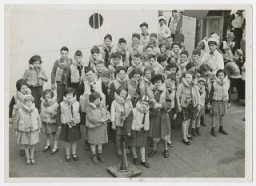
-
Darfur
ArticleFrom 2003 to 2005, an estimated 200,000 civilians died as a result of a campaign of violence in Darfur by the Sudanese government. In 2004, the US Secretary of State called this violence a genocide.

-
Martin Weiss
ArticleMartin Weiss and his family were deported to Auschwitz in 1944. Explore Marty’s biography and his description of arrival in Auschwitz.

-
David Levine describes hiding his two-year-old nephew during a roundup of children in the Kovno ghetto
Oral HistoryDavid was born to a middle class Jewish family and attended a Jewish school. In August 1941, after the Germans occupied Kovno, he was forced into the Kovno ghetto, where he shared two rooms with his immediate and extended family. Many members of his extended family were killed during the Great Aktion in Kovno in October 1941. David worked in a forced-labor brigade in the ghetto. In March 1944, he witnessed the Kinder Aktion and was able to save his nephew. During the destruction of the Kovno ghetto, David…
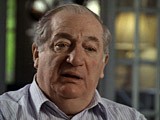
-
Gusen
ArticleIn 1940, the Nazis established Gusen concentration camp. Learn more about camp conditions, forced labor, and liberation.
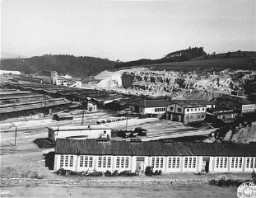
-
Ritchie Boys
Article“Ritchie Boys” is a term used for American soldiers who trained at Camp Ritchie during World War II. Several thousand were Jewish refugees from Europe. Learn more.
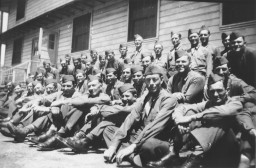
-
Abraham Bergman
ID CardAbraham was born to a Jewish family in Krasnik, a town in the Lublin district of Poland. The town had a large Jewish population. Abraham's father was a tailor. When Abraham was 2, his mother died and he was raised by his grandmother. At the age of 7, Abraham started public school. 1933-39: Abraham liked school but found it difficult. The Christian children often yelled at the Jews, "You killed our God." One year, on the day before Christmas break, some kids brought ropes tied to iron weights to school.…

-
Eugeniusz Rozenblum
ID CardEugeniusz's parents married in 1922 in the Soviet Union, where his father owned a textile mill. Fearing arrest by the Soviets for being "bourgeois," Eugeniusz's parents fled to Poland, where Eugeniusz was born. 1933-39: Eugeniusz was a secondary school student and was preparing to enter university, either in Poland or at the Hebrew University in Palestine. The German occupation of Lodz in September 1939 interrupted his schooling. One month after the occupation, a German soldier came to his family's door…

-
Hinda Chilewicz
ID CardHinda was the eldest of three children in a comfortable middle class Jewish family. Her father owned a textile business in Sosnowiec and her mother attended to the home. Sosnowiec in southwestern Poland had a growing Jewish community of almost 30,000 people. There was a Jewish hospital as well as religious schools. 1933–39: Hinda was just 13 years old when German troops invaded Poland on September 1, 1939. Three days later, they occupied Sosnowiec and terrorized the Jewish community, killing over a…

-
Paula Wajcman
ID CardPaula was raised in a religious Jewish family in Kielce, a city in the southeast of Poland. Her family lived in a modern two-story apartment complex. Paula's father owned the only trucking company in the district. Her older brother, Herman, attended religious school, while Paula attended public kindergarten in the morning and religious school in the afternoon. 1933-39: Paula's school uniform was a navy blazer with a white blouse and pleated skirt. At age 9, she did the "Krakowiak" dance at school. Boys…

-
Celia Petranker
ID CardCelia was the youngest of three daughters born to Jewish parents living in Stanislav [Stanislawow], Poland. Her father was an ardent Zionist, and dreamed of moving his family to Palestine to help build a Jewish homeland. Celia and her sisters attended private Hebrew primary and secondary schools to help prepare them for their eventual immigration to Palestine. 1933-39: Celia's oldest sister, Pepka, left for Palestine one week after the Germans invaded Poland on September 1, 1939. Pepka's departure was…
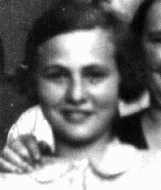
-
Julius (Julo) Levin
ID CardJulo was born to a Jewish family in the city of Stettin in northeastern Germany. From an early age Julo showed an interest in art; at 6 he had collected more than 3,000 pictures. His family hoped he would become a businessman, but his interest in painting absorbed all his energy. In 1926 he graduated from art school and by 1931 he secured his first commission in Duesseldorf. 1933-39: Until the Nazis came to power in 1933, Julo was a highly regarded artist. The Nazis' strict interpretation of art, however,…

-
Alice Lok
ID CardAlice grew up in a Jewish family in Sarvar, Hungary, near the Austrian border. She had two younger brothers and an older sister. Her father worked for the family's carpet weaving and import/export business and was often away, traveling to their Budapest office. Alice's grandfather was a community leader and president of one of Sarvar's synagogues. 1933-39: Alice had a very special relationship with her grandfather. She admired him. People knew that they could always come to him for help of any kind. He…

-
Kato Dicker Nagy
ID CardThe fourth of five children, Kato was born to a Jewish family who owned a successful furniture store and lumberyard in Ujpest, five miles from Budapest. As a young girl, Kato enjoyed singing and playing the violin in her family "orchestra" in their large home. She was also athletic, and loved to swim, bicycle and play tennis. Best of all, Kato enjoyed rowing on the Danube with her friends. 1933-39: Newly married, Kato moved to Zagyvapalfalva, a town northeast of Budapest with only five or six Jewish…
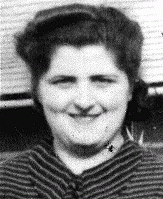
-
Magda Rein
ID CardMagda was the oldest of two children born to observant Jewish parents. They lived in Satoraljaujhely, a town in northeastern Hungary on the Czechoslovakian border. Jews represented some 20 percent of the town's approximately 18,000 persons. Magda's father owned a bakery; her mother was a midwife. 1933-39: At 10 years of age, Magda began accompanying her mother when she attended to births nearby. Her mother helped all women--Jews, Roma (Gypsies) and peasants in the surrounding villages. When Magda was 12,…

-
Wolfgang Lachman
ID CardWolfgang was the only son of observant Jewish parents living in Berlin. Though trained as a mechanical engineer, Wolfgang's father ran a wholesale kerchief and handkerchief business that he had taken over from his father-in-law. Wolfgang's family lived in an apartment above the business. They enjoyed vacationing at their country home in Neuenhagen, a suburb of Berlin. 1933-39: Wolfgang began school when he was 5; that year Hitler was named leader of Germany. Every morning they had to sing three songs: the…

-
Jenine Gutman
ID CardJenine was the younger of two daughters born to Jewish parents. They lived in a small city with a large Jewish population in central Moldavia. Her father, a veteran of World War I, came from a large family and Jenine had more than 15 aunts and uncles, all living in Bacau. This extended family helped raise Jenine and her sister Sofia while their parents ran a grocery store. 1933-39: Just like every child her age, Jenine belonged to a national youth organization headed by Prince Michael. They wore special…
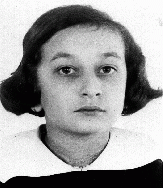
-
Hanandel Drobiarz
ID CardHanandel was raised with his three brothers and sisters in the town of Kozlow, where his family sold grain and livestock. The family was religious, and they observed the Sabbath and all Jewish holidays and dietary laws. When Hanandel was 5, he began studying Hebrew, the Bible, prayers, and Jewish history. 1933-39: At age 14 Hanandel was apprenticed to his uncle in Sosnowiec as a tinsmith. He worked for his uncle during the day and attended trade school at night. When he graduated from trade school he…

-
Shulamit Perlmutter (Charlene Schiff)
ID CardShulamit, known as Musia, was the youngest of two daughters born to a Jewish family in the town of Horochow, 50 miles northeast of Lvov. Her father was a philosophy professor who taught at the university in Lvov, and both of her parents were civic leaders in Horochow. Shulamit began her education with private tutors at the age of 4. 1933-39: In September 1939 Germany invaded Poland, and three weeks later the Soviet Union occupied eastern Poland, where Shulamit's town was located. Hordes of refugees…

-
Channa Morgensztern
ID CardChanna and her husband and five children lived 35 miles east of Warsaw in the small predominantly Jewish town of Kaluszyn. Channa's husband, Jankel, was employed as a clerk in the town hall. After Channa's children reached school age, she helped her mother run a newspaper kiosk in town. 1933-39: Germany has invaded Poland, and Channa's hopes that Kaluszyn wouldn't be in the line of fire have been shattered. First, a German plane flew over their town and dropped a bomb on people waiting in line outside a…
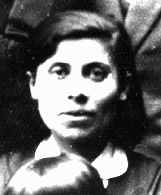
-
Lonia Goldman Fishman
ID CardLonia had three sisters and one brother. Her parents owned a cotton factory in the town of Wegrow. The Goldmans were a religious family, strictly observing the Sabbath, the Jewish holidays and the dietary laws. 1933-39: After studying all day at public school, Lonia attended a religious school for girls called Beis Yakov where she studied Hebrew, the Bible and Jewish history. Later, when she was in high school, a private tutor came to the house to teach her Hebrew. Lonia's favorite hobby was knitting.…
